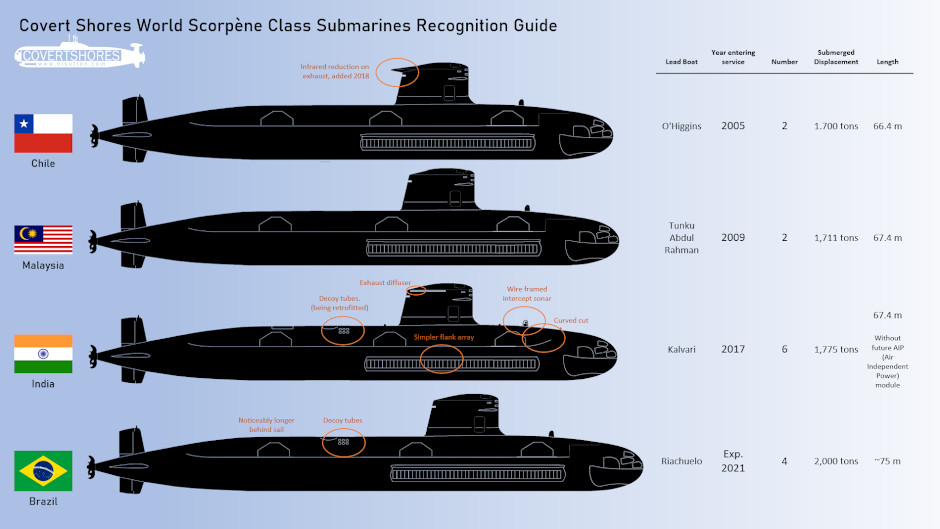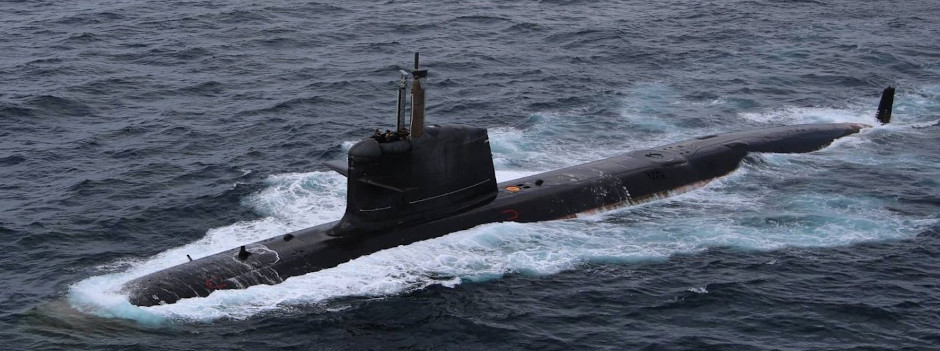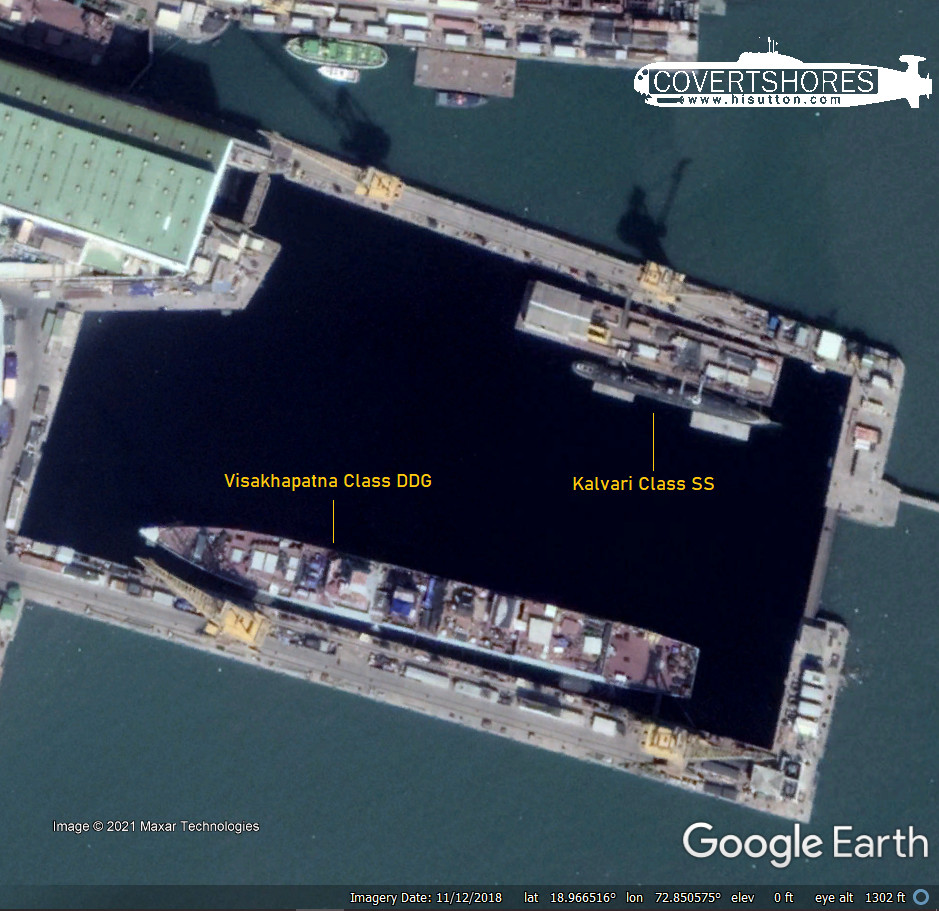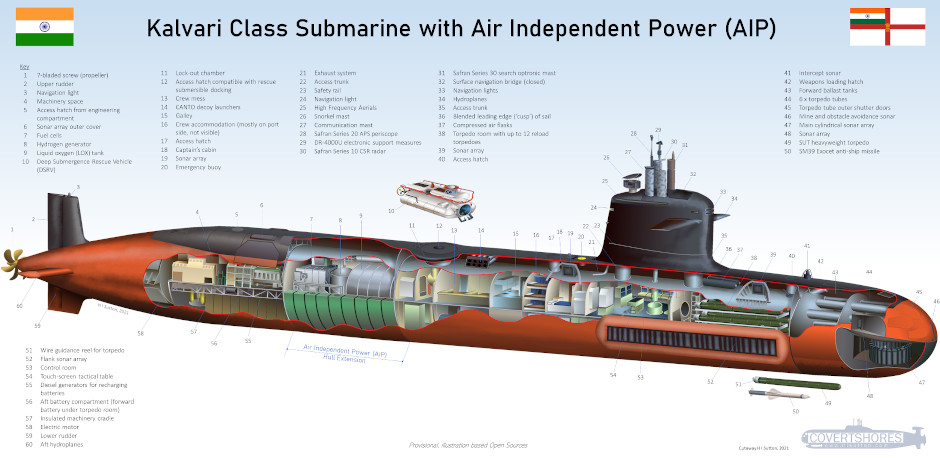Kalvari Class Submarine: The Scorpène's New Sting
 The latest attack submarines to join the Indian Navy, the six Kalvari Class boats were ordered under the P-75 program. A derivative of the French Scorpène Class. they will soon differ in one significant way: they will be upgraded with Air Independent Power (AIP).
The latest attack submarines to join the Indian Navy, the six Kalvari Class boats were ordered under the P-75 program. A derivative of the French Scorpène Class. they will soon differ in one significant way: they will be upgraded with Air Independent Power (AIP).
India are not the only operators of the Scorpène Class, which has been very successful internationally. It has been sold to Chile (2), Malaysia (2) and Brazil (4). There are also reports of it being a favorite to fulfill the Philippines new submarine requirement. but India's Scorpenes have been built locally and have some local components.

CLICK to enlarge.
The Kalvari Class are replacing the Shishumar Class which are German designed Type-209s built in the 1980s. Although much newer boats, they are broadly similar in terms of raw performance. Diesel-electric submarines had not radically changed in the intervening years. But AIP will be transformative and shift the Kalvari Class into a different league to the Shishumar Class.
Get The essential guide to World Submarines
This Covert Shores Recognition Guide Covers over 80 classes of submarines including all types currently in service with World Navies.Check it out on Amazon
| Name | Pennant # | Launch | Commission |
|---|---|---|---|
| INS Kalvari | S 21 | Oct 27 2015 | Dec 14 2017 |
| INS Khanderi | S.22 | Jan 12 2017 | Sep 28 2019 |
| INS Karanj | S 23 | Jan 31 2018 | Mar 10 2021 |
| INS Vela | S 24 | May 06 2019 | |
| INS Vagir | S 25 | Nov 12 2020 |

Kalvari Class. Photo: Indian Navy
The Scorpène Class Design
The Scorpène (meaning Scorpion Fish) is a much more modern design than the preceding Agosta Class. It has a more streamlined 'Albacore' hull form with a rounded nose. The hull has simple single-hull construction without ballast tanks wrapped around the outside like the Agosta. The sail is highly blended into the casing, which itself is neatly connected to the pressure hull. Large flank sonar arrays come as standard and the bow sonar dome is shaped for optimum coverage. It has more torpedo tubes, six instead of four, and can carry up to 18 torpedo-sized weapons (versus 16).
Inside the control room is much more modern too. There is only one penetrating mast, the attack periscope. Therefore only one vertical shaft interrupts the otherwise open space. Behind the periscope is an interactive tactical table with all-round access and a touch-screen top.
THE book on Special Forces subs Covert Shores 2nd Edition. A world history of naval Special Forces, their missions and their specialist vehicles. SEALs, SBS, COMSUBIN, Sh-13, Spetsnaz, Kampfschwimmers, Commando Hubert, 4RR and many more.
Check it out on Amazon
Air Independent Power
AIP, sometimes written as Air Independent Propulsion, should greatly increase their survivability. It works by using a fuel cell to power the electric motor while the boat is submerged. the submarine will retain its batteries and these can be topped up via the diesel generators in the traditional way. But by running on AIP instead it will conserve the batteries much longer, meaning that it has to snorkel to run the diesels much less frequently.
The fuel cells are locally developed by India's Defence Research and Development Organisation (DRDO), together with Larsen & Toubro . This is similar but separate from Naval Group's (who own the Scorpène design) own fuel cell AIP system. The system has already been ground tested at the Naval Materials Research Laboratory (NMRL).
The fuel cell, together with its liquid oxygen (LOX) tank and hydrogen generator, will be accommodated in a new hull section. This will increase the overall length of the submarine.

Related articles (Full index of popular Covert Shores articles)

 Indian next-generation S-5 Class SSBN
Indian next-generation S-5 Class SSBN

 Indian design for a Coastal Submarine for Special Forces
Indian design for a Coastal Submarine for Special Forces

 North Korean Modified-Romeo Class ballistic missile submarine w/Cutaway
North Korean Modified-Romeo Class ballistic missile submarine w/Cutaway

 Chinese Sailless Submarine
Chinese Sailless Submarine






